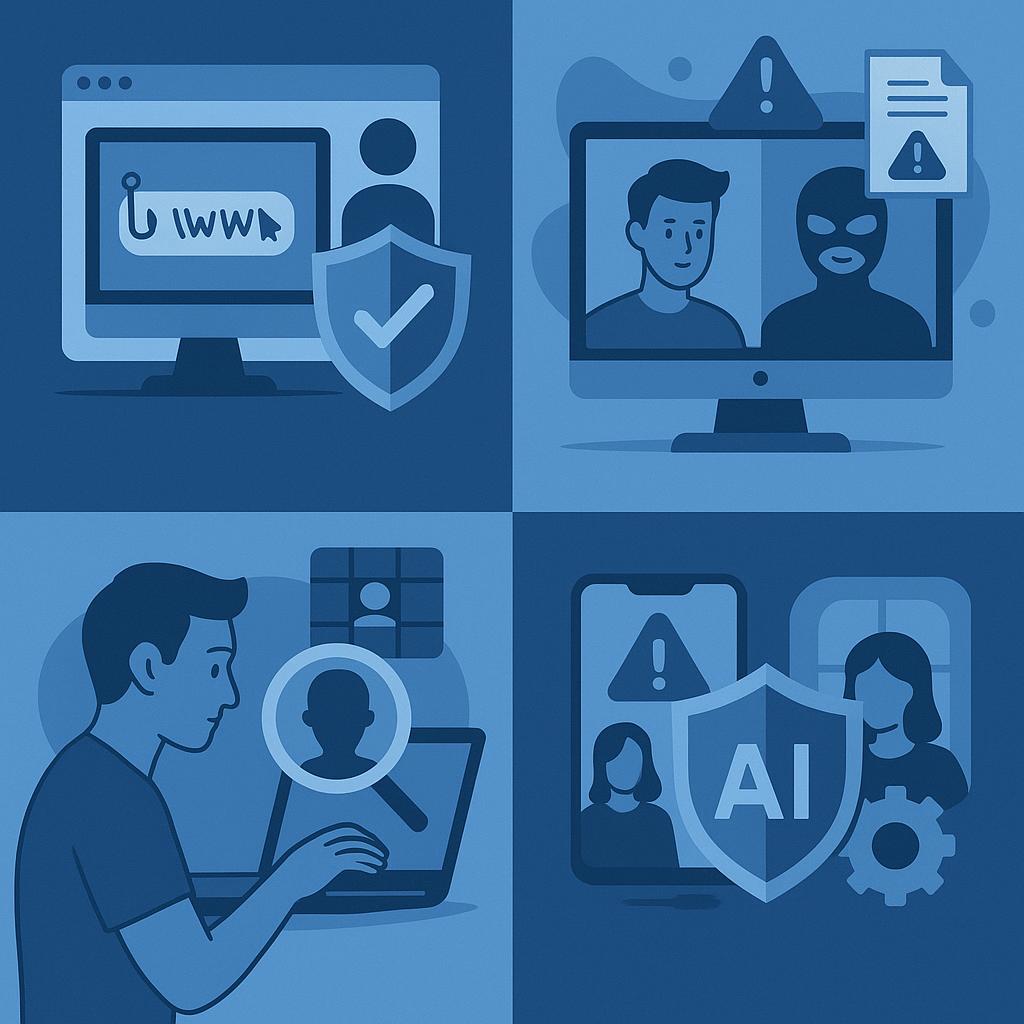
How AI and Software Technologies Are Transforming the Fight Against Webcam Sextortion
Webcam sextortion, often called “몸캠피싱” in South Korea, is one of the most dangerous types of cybercrime targeting young adults. In most cases, scammers trick victims into joining a sexually explicit video call. They secretly record the session and later threaten to share the video unless the victim pays a ransom.
This crime causes serious emotional and mental harm. For a long time, it was also very hard to stop from a technical perspective. However, that is beginning to change. Thanks to fast progress in AI and cybersecurity software, new tools are helping both prevent and respond to these attacks. One such platform, DrPhishing.ai, offers real-time detection, warning systems, and automated recovery options.
In this article, we’ll look at how artificial intelligence and software platforms are reducing the risk of webcam sextortion—and why they are becoming a key part of future cyber defense.
1. Real-Time Detection of Phishing and Malicious Links
One of the most common entry points for webcam sextortion is through phishing links sent via social media, dating apps, or messaging platforms. These links often redirect users to fake video platforms or malware-infected download pages.
Modern AI tools can now analyze URLs in real time, scanning for patterns commonly used in malicious scripts. Platforms like DrPhishing.ai utilize advanced threat intelligence engines trained on vast datasets of phishing behavior. The AI can:
- Detect suspicious links before they are clicked
- Block harmful domains automatically
- Alert users about potentially dangerous messages in real-time
This proactive approach dramatically reduces the chances of a victim ever falling for the scam in the first place.
2. Image and Video Fingerprinting for Content Takedown
For victims, the biggest fear is the spread of compromising content. Historically, once a video was uploaded, it was nearly impossible to track or delete. But with AI-driven content fingerprinting, that’s changing.
AI can now:
- Generate a unique digital fingerprint of illicit images or videos
- Track their presence across search engines, social media, and cloud storage
- Automatically submit takedown requests under global privacy laws (e.g., GDPR, DMCA)
Some platforms even offer 24/7 automated surveillance for leaked content. This continuous monitoring means victims have a much stronger chance of containing the damage quickly, and in many cases, removing the content before it goes viral.
3. Behavioral AI for Scam Pattern Recognition
Beyond technical defense, AI is also revolutionizing how we understand scammer behavior. By analyzing vast datasets from previous cases, machine learning models can recognize:
- The linguistic patterns of scammers
- Chat flow anomalies (e.g., sudden switches to video calls)
- The timing and geographic origin of attacks
This behavioral intelligence allows cybersecurity firms to build predictive models that flag suspicious interactions even before a scam fully unfolds. If a chat sequence begins to mirror known sextortion patterns, systems like DrPhishing.ai can issue early warnings or even block the interaction entirely.
4. Deepfake Detection and Media Verification
As deepfake technology becomes more widespread, so do its malicious uses. Scammers are increasingly using fake video personas to lure victims into webcam sessions. Thankfully, AI tools are fighting back with deepfake detection algorithms that analyze facial expressions, pixel noise, and voice consistency.
Advanced platforms can now:
- Identify whether a video is synthetically generated
- Compare user-uploaded video streams with known scam templates
- Alert users to suspicious anomalies in real time
This adds a crucial new layer of defense, particularly for young users who may not be familiar with how realistic deepfakes can appear.
5. AI-Powered Incident Response and Reporting
One of the most traumatic aspects of a sextortion case is not knowing what to do after it happens. Many victims freeze or panic, often delaying action when every second counts. That’s where AI-guided response platforms shine.
With automated playbooks, victims are walked through a step-by-step recovery process:
- Immediate system cleanup and malware scanning
- Secure communication with legal or law enforcement advisors
- Fast deployment of takedown bots for content removal
- Psychological resources and anonymous peer support
Solutions are streamlining this entire journey using automation and chatbot technology, ensuring no victim is left alone or uninformed.
6. Educational AI and Simulated Scenarios
Prevention starts with awareness. That’s why many modern anti-sextortion platforms are investing in AI-based simulation tools that educate users through interactive role-play.
By mimicking real-world scam attempts, these programs teach users:
- What red flags to watch for
- How to react to suspicious behavior
- How to report a scam safely and quickly
The AI adapts the simulation based on the user’s behavior, making the training experience highly personalized and effective—especially for teens and young adults who are most at risk.
7. Data Privacy and Legal Compliance Built In
Privacy is a top concern in any case involving intimate content. AI system should be privacy-first architectures, ensuring all data is encrypted, never stored longer than necessary, and only used to aid the recovery process.
Moreover, solutions like DrPhishing.ai are built to comply with international regulations:
- GDPR (EU)
- CCPA (California)
- Korean Information and Communication Network Act
These legal frameworks empower victims to assert their digital rights, giving them more control over how their data is used in the remediation process.
Conclusion: A Future Where Technology Works for Victims
While the threat of webcam sextortion remains serious, AI and cybersecurity software are changing the narrative. No longer must victims feel helpless or ashamed. With platforms leading the charge, there’s a growing digital infrastructure that puts power back into the hands of users.
From real-time phishing detection and content take down to deepfake analysis and automated recovery, AI is proving to be one of the most effective tools in the fight against this deeply personal cyber crime. As these technologies continue to evolve, we can hope for a safer, smarter, and more supportive digital world for everyone.